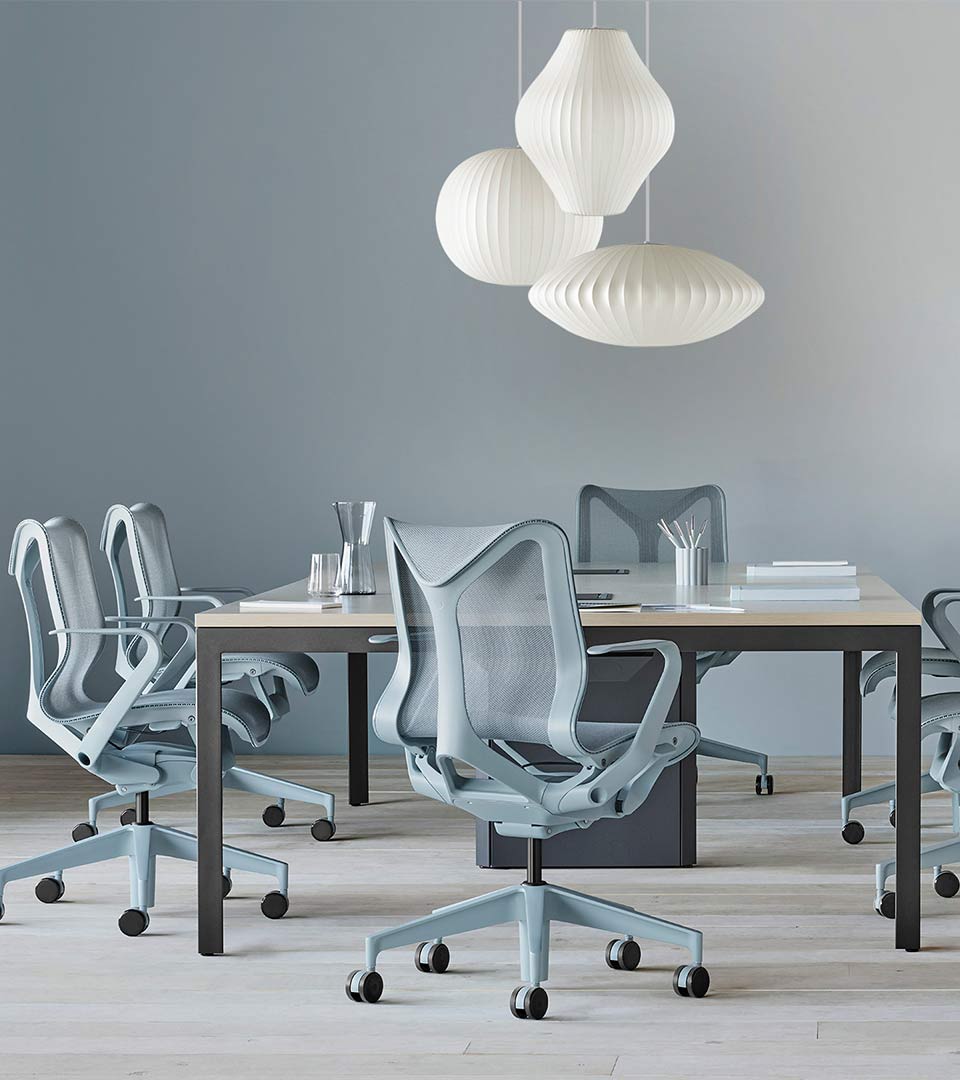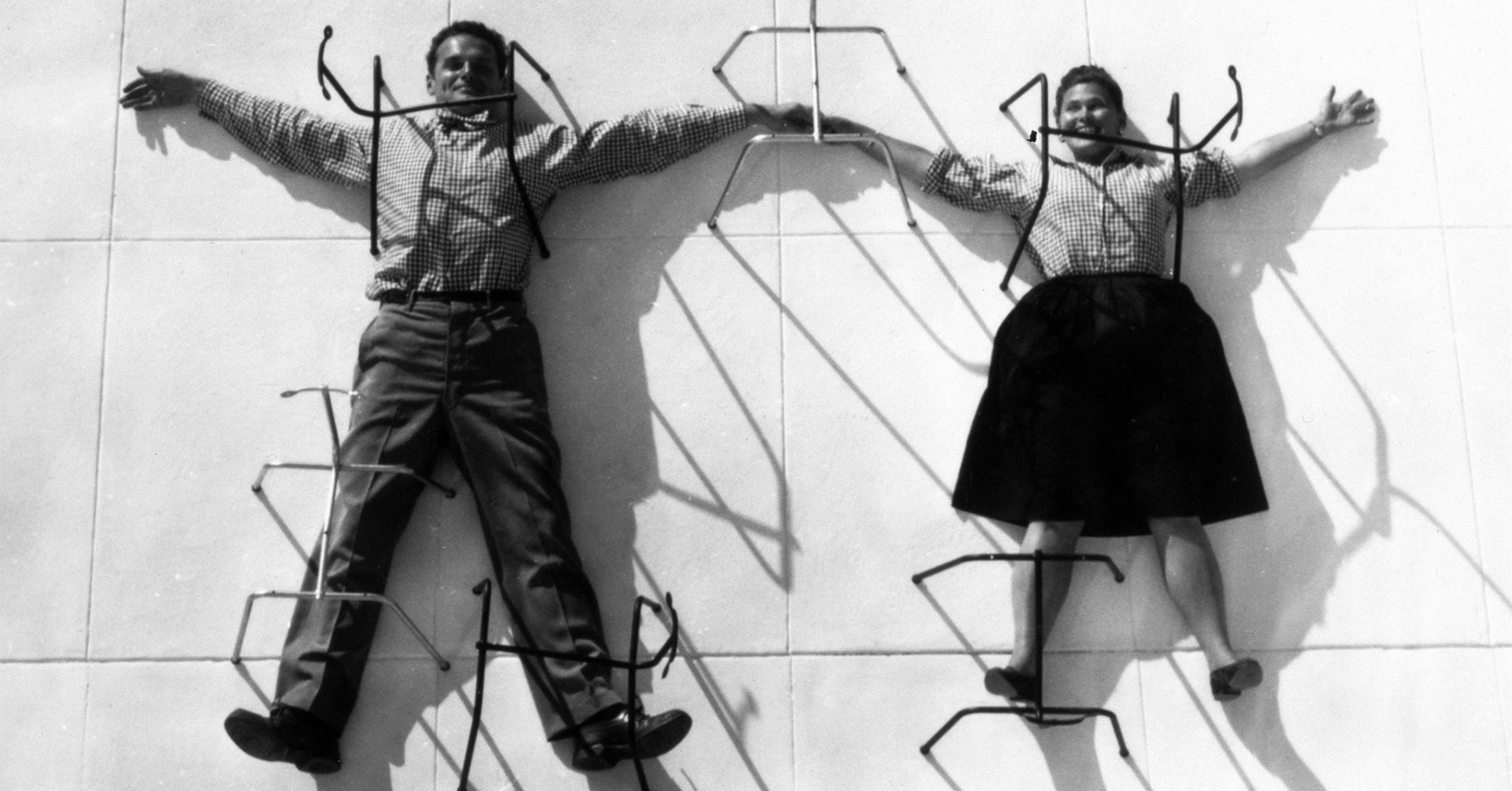Charles and Ray pushed the boundaries and expectations for quality work, whether pursuing personal interests or tackling commissioned projects for a variety of corporations.
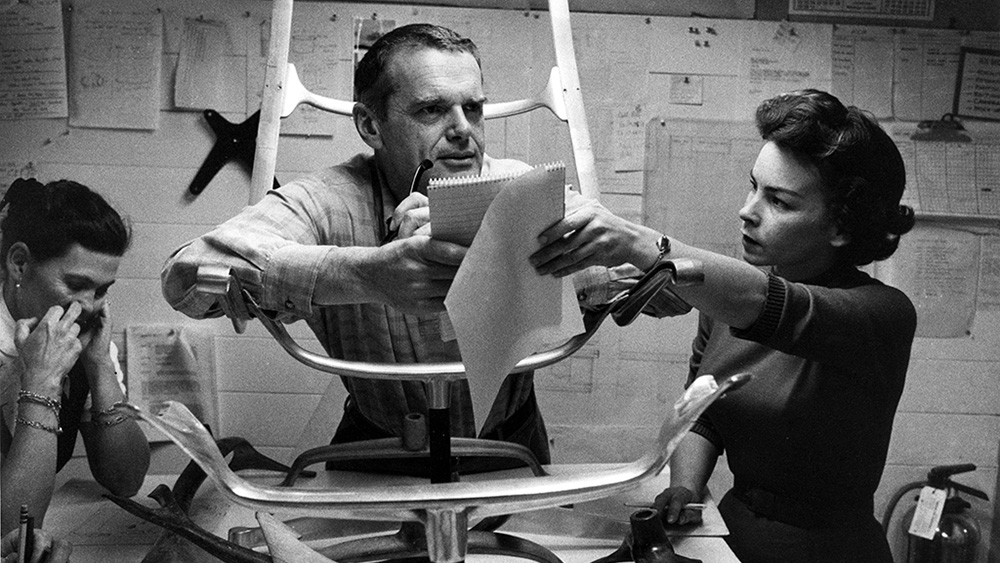
1. They had a profound respect for learning
In the Eameses’ second Norton Lecture, Charles said the one essential thing he would teach a young child is “to learn to have respect for things that have no immediate payoff.” To some people’s dismay, he used to let his daughter Lucia paint with his expensive sable-hair paintbrushes, even when she was just a few years old. He said he would make “darn sure to show
Charles and Ray applied these concepts to their work as well, whether figuring out how to mould plywood into complex curves or learning key concepts in order to convey them to others in exhibitions such as Mathematica, films such as Powers of Ten, and a variety of lectures and educational projects. Lucia, from the very beginning, how to properly respect and care for brushes and paints.”
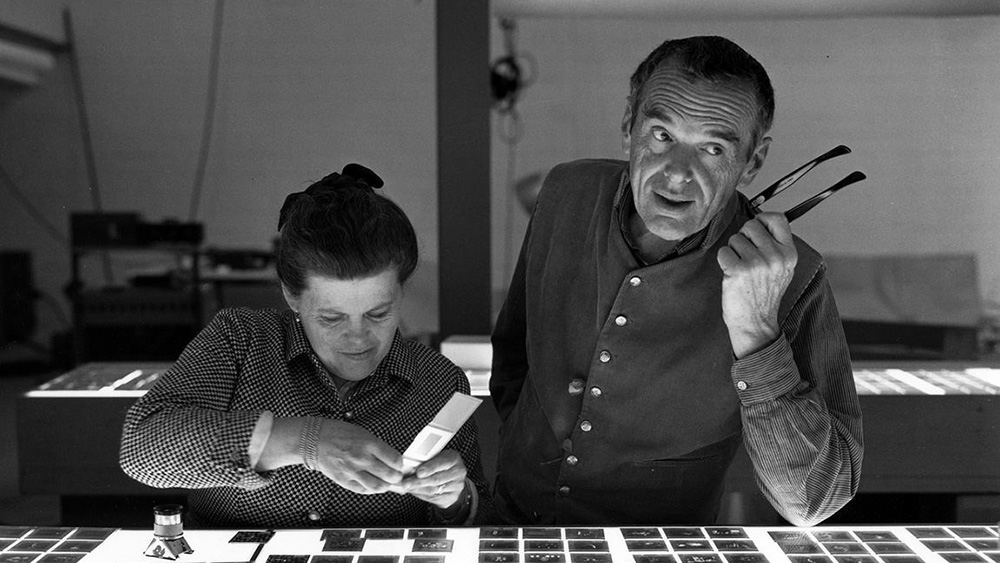
2. They set a precedent for quality work
Charles and Ray pushed the boundaries and expectations for quality work, whether pursuing personal interests or tackling commissioned projects for a variety of corporations.
They initially supplied the American Navy with leg splints and stretchers during World War II and following the war they took what they had learned about moulded plywood and applied it to their ground-breaking furniture designs. Their furniture made of cast aluminium, fiberglass-reinforced plastic, wire mesh, and moulded plywood was distributed by Herman Miller and brought their studio international acclaim.
Hugh DePree, writing as CEO of Herman Miller, explained that “Once in discussing the design of Herman Miller’s New York showroom, the words ‘good design’ were used. Charles Eames said, ‘Don’t give us that good design crap. You never hear us talk about that. The real questions are: Does it solve a problem? Is it serviceable? How is it going to look in ten years?'”
Perhaps that’s the greatest gift Charles and Ray gave us: A visual reminder that, whatever we build together in this world, we should strive to make it just as it should be.
3. They pushed boundaries
Charles and Ray always chose the partnership that was right for them. They were true collaborators in a time when many people found it hard to conceive of a woman playing an equal role. Charles often said that “she [Ray] is equally responsible with me for everything that goes on here.” A close friend and film producer, Julian Blaustein, expanded upon that idea: “Charles began to realize that there was a little too much ‘a Charles Eames this’ and a ‘Charles Eames that’ when he knew how much she contributed. And finally, he insisted on the ‘Ray and Charles Eames’—or ‘Charles and Ray Eames’—credit line.”
The husband-and-wife team also pushed boundaries in the work they did, both technologically and ideologically. In 1959, Charles and Ray created the multiscreen slideshow Glimpses of the U.S.A. The United States Information Agency (USIA) commissioned the Eames Office to do this project for the American Exhibition in Moscow as part of a cultural exchange program. The Eameses were tasked with portraying the American way of life. During this cold war era, it was clear that USIA was hoping for something that referenced the country’s strength and military prowess, but that’s not what Charles and Ray did
The Eameses showed the country’s natural landscape, cities, and suburbs. They impressed upon people that, for better or worse, cars and highways are a significant part of America’s cultural landscape. But most importantly, they skipped the missiles and flags, opting instead to show things that connect all people, no matter where they live: kids playing, families sharing a meal, and stars shining in the sky. The Eameses shared a message that they knew to be true and right; they shared a message of humanity.
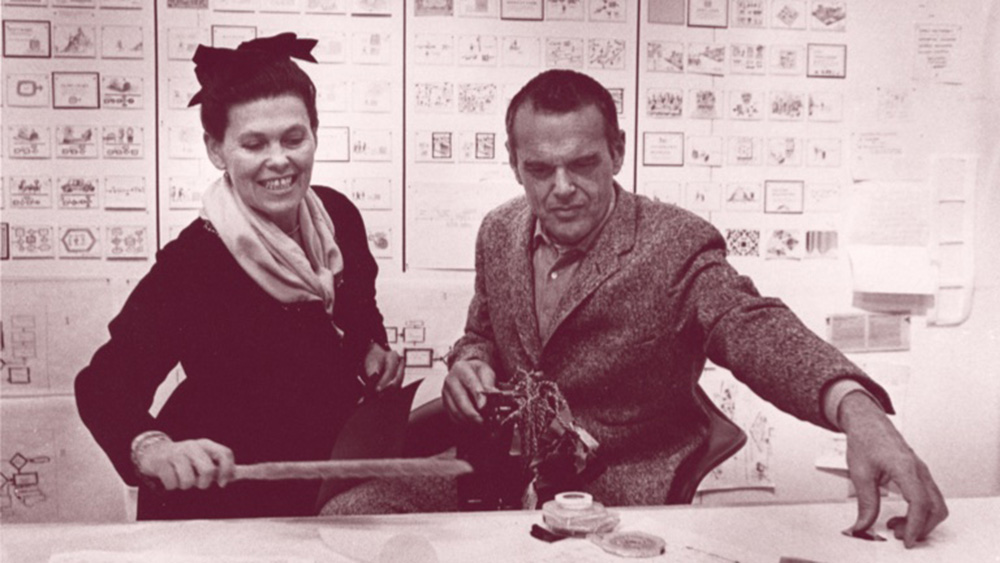
4. They believed in failing in order to succeed
Over the course of the Eameses’ career, they had more than 100 employees. Any time they hired someone new, that person’s first project inevitably had nothing to do with his or her professional training. A new employee skilled in making films might have been tasked with a project in graphic design, while other new staff members were asked to arrange a piece of music.
Former Eames Office employee Parke Meek once said that when you walked into work each day, “you never knew what you were going to do.” Or, as Jeannine Oppewall, another Office staffer put it: “Charles could easily have been the dictator and said, ‘No, I want it this way.’ But instead, his method was encouraging you to kind of… Here’s the rope; I hope you have enough of it to hang yourself with. And, by the way, come back and tell me if you think you’re about to be hung. Please.” As far as Charles and Ray were concerned, failure was just the first step on a long path toward something worthwhile. They modeled every design problem over and over and over again. That learning-by-doing process taught them what didn’t work, and also allowed them to know when they’d finally gotten something right. Even then, they were never done searching for better answers.
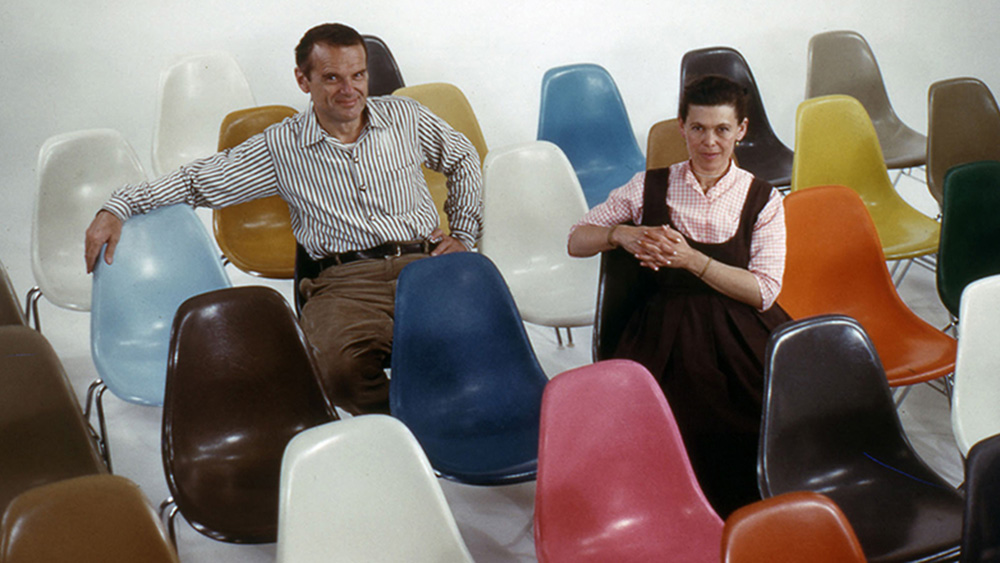
5. Their approach led to timeless designs
Charles and Ray focused on how a design would work, rather than how it looked. This is one fundamental reason why their designs are so timeless.
This “way-it-should-be-ness,” as the Eameses often called it, is evident in everything they did. It’s the reason Powers of Ten is referenced in contemporary movies and TV shows and still feels so fresh and relevant today; it’s the reason Eames Molded Fiberglass Chairs look at home anywhere from a quaint terrace to luxury condos; and it’s the reason their ever-playful toy, the Eames House of Cards, is still as vibrant and engaging now as it was when the design duo created it in 1952.
An Eames Primer elaborates on Charles and Ray’s notion of “way-it-should-be-ness”: “This quality was something to be desired in a design. It had to do with the idea of unselfconsciousness or unpretentiousness and, in a way, is the opposite of style for its own sake. What it meant is that when one looked at a design, one did not think ‘how clever’ or ‘strange’ or ‘new.’ Hopefully, one did not notice it all. Ideally, one thought it had been doing whatever it was doing forever.”
Perhaps that’s the greatest gift Charles and Ray gave us: A visual reminder that, whatever we build together in this world, we should strive to make it just as it should be.


